Alexander House
Introduction
Text-to-speech Audio
This Victorian mansion was built in 1897 for the new mayor of Boise, Moses Alexander. Alexander was a local businessman who founded a men's clothing company, Alexander's. Alexander went on to serve as Idaho's governor from 1914 to 1918. The State of Idaho acquired the Alexander House in 1977 from the family, five years after it was listed in the National Register of Historic Places. Currently, the Alexander House is one of the Idaho state office buildings that make up the Capitol Mall. The Foundation for Idaho History and the Idaho Children's Trust Fund are among the tenants of the building.
Images
2018 photo of Alexander House, view from street corner (Tamanoeconomico)
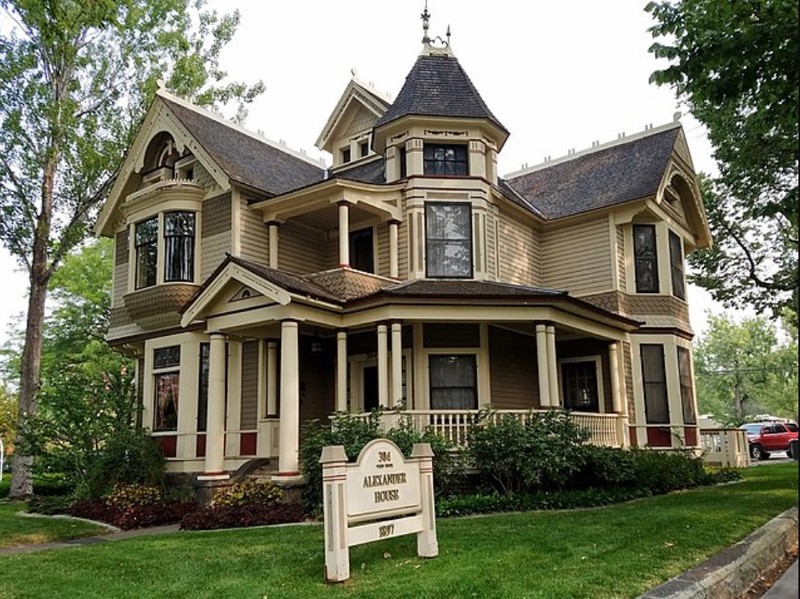
Governor Moses Alexander in 1916 newspaper photo
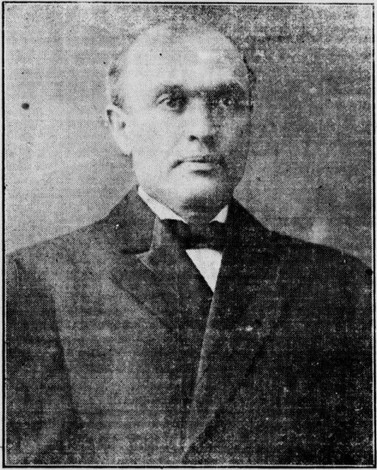
Moses Alexander House (green arrow) on 1903 Sanborn map (p. 23)
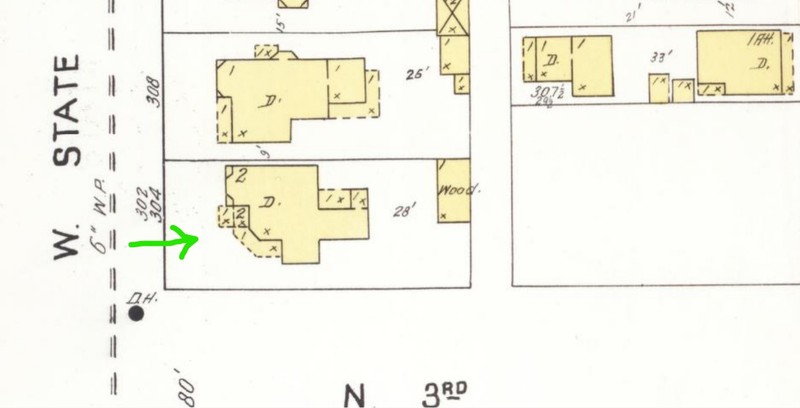
Moses Alexander House (green arrow) across street from St. Teresa's Academy, 1949 Sanborn map (p. 56)
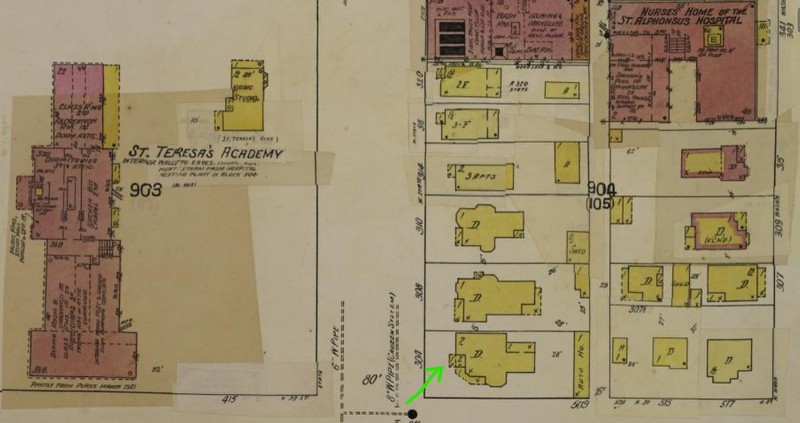
View of Moses Alexander House in 1972, looking north from intersection (Arthur A. Hart)
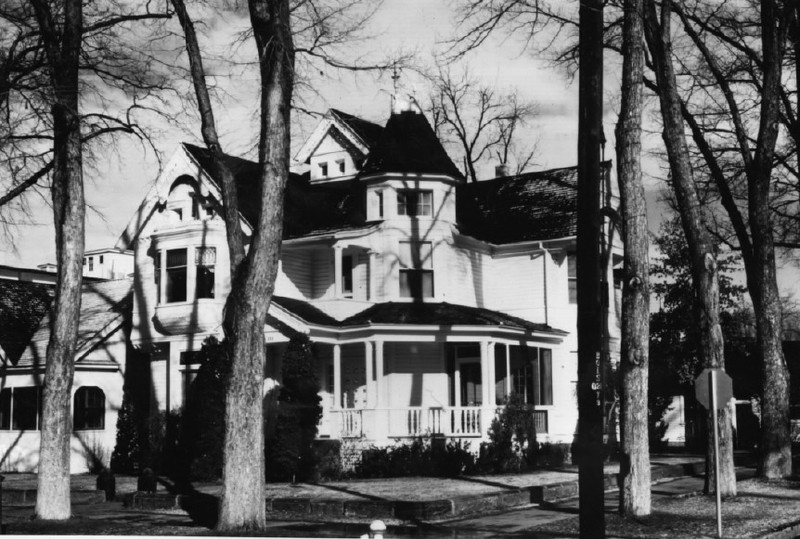
Backstory and Context
Text-to-speech Audio
Moses Alexander was born in Germany in 1853. He emigrated to the U.S. as a teenager in 1868 and lived in New York City before settling in Chilicothe, Missouri where he worked as a clerk in a cousin's men's clothing shop. He became a partner in the firm, Jacob Berg & Company, and stayed with the company until 1891. There was no Jewish congregation in Boise when Alexander arrived in the area in 1894. He was among a group of men who organized and built the Beth Israel Synagogue in Boise. Although Alexander was a Democrat and Boise was heavily Republican, he was elected Mayor of Boise twice; he served from July 1897 to July 1899 and July 1901 to July 1903. Alexander founded the men's clothing company, Alexander's, which grew to over a dozen locations in Idaho and eastern Oregon. Their former flagship store location in downtown Boise, the Alexander Building at Ninth and Main, is also a Clio entry.
In 1895, Alexander bought three lots at the northwest corner of State and N. Third for a new home. The four-bedroom wood frame house with a corner turret, bay window, multiple types of wood shingles, and two porches cost $3,200 to build. Alexander was a 46-year-old merchant and clothier in 1900 and shared his new home on State St. with wife Helena (age 46), a German native who emigrated to America in 1867. The Alexanders had three daughters at home: Emma (21); Henrietta (20); and Leha (14); all were born in Missouri. A fourth child (son Nathan) lived elsewhere in 1900.
Alexander was elected Governor of Idaho in November 1914; he was the eleventh governor and the second non-American native governor in Idaho. He also was only the second Jewish governor of a U.S. state. He was a proponent of the prohibition of alcohol and managed to get a constitutional amendment passed in Idaho in 1915, several years before the national Prohibition took effect. In 1916, Alexander was elected governor for a second term. During his terms in office, a Workman's Compensation law was passed, and a law was enacted funding construction of state highways with one million dollars. At the end of his second term, in January 1919, Alexander retired from politics.
In 1920, Moses and Helena shared their State St. home with son Nathan (36), a salesman in his father's clothing shore, and a domestic servant named Nettie Van Winkle (35). Moses died in 1932. By 1940, the house was the home of Nathan (57, a Missouri native), who was the manager of a men's clothing store; his wife Rita (40, a California native); and son Nathan M. (10). Rita owned and lived in the home in 1972 when it was documented for the National Register. The State of Idaho acquired the Alexander House in 1977. One of the State of Idaho tenants in the Alexander House in the late 1970s was the Arts and Humanities Commission of the Secretary of State. The Idaho Commission on the Arts had offices in the building by the late 1980s and into the twenty-first century.
Sources
Albright, Paul. Marcelli, Ralph J. State Administrative Officials Classified by Functions, 1977. Lexington, KY. Council of State Governments, 1977.
Brosnan, Cornelius James. History of the State of Idaho. New York, NY. Charles Scribner's Sons, 1918.
Capace, Nancy. Encyclopedia of Idaho. Encyclopedia of the United States. Santa Barbera, CA. Somerset Publishers, 2001.
DuChez, JoAnne. Marcus, Sharon J. The National Directory of State Agencies, 1989. Washington, DC. Information Resources Press, 1989.
Hart, Arthur A. NRHP nomination of Moses Alexander House, 304 State St., Boise, ID. National Register. Washington, DC. U.S. Government, 1972.
Hawley, James H. History of Idaho: The Gem of the Mountains. Volume I. Chicago, IL. S. J. Clarke Publishing Company, 1920.
Stapilus, Randy. It Happened in Idaho. Guilford, CT. Morris Book Publishing, 2011.
State of Idaho Department of Administration. CMS: Capitol Mall Services, Welcome to Capitol Mall Services. Accessed January 26th, 2023. https://cms.idaho.gov/.
U.S. Census Bureau. Household of Moses Alexander at 304 State Street, Ward 1 Boise, Idaho, dwelling 103, family 112. Washington, DC. U.S. Government, 1900.
U.S. Census Bureau. Household of Moses Alexander at 304 State Street, District 12 Boise, Idaho, dwelling 27, family 30. Washington, DC. U.S. Government, 1920.
U.S. Census Bureau. Household of Nathan Alexander at 304 State Street, District 1-9 Boise, Idaho, dwelling 204. Washington, DC. U.S. Government, 1940.
https://en.wikipedia.org/wiki/Alexander_House_(Boise,_Idaho)#/media/File:Alexander_House_(A).jpg
Clearwater Republican (Orofino), October 20th, 1916, p. 7
Library of Congress (LOC): https://www.loc.gov/item/sanborn01569_004/
LOC: https://www.loc.gov/item/sanborn01569_006/
National Park Service (NPS): https://npgallery.nps.gov/AssetDetail/NRIS/72000431
